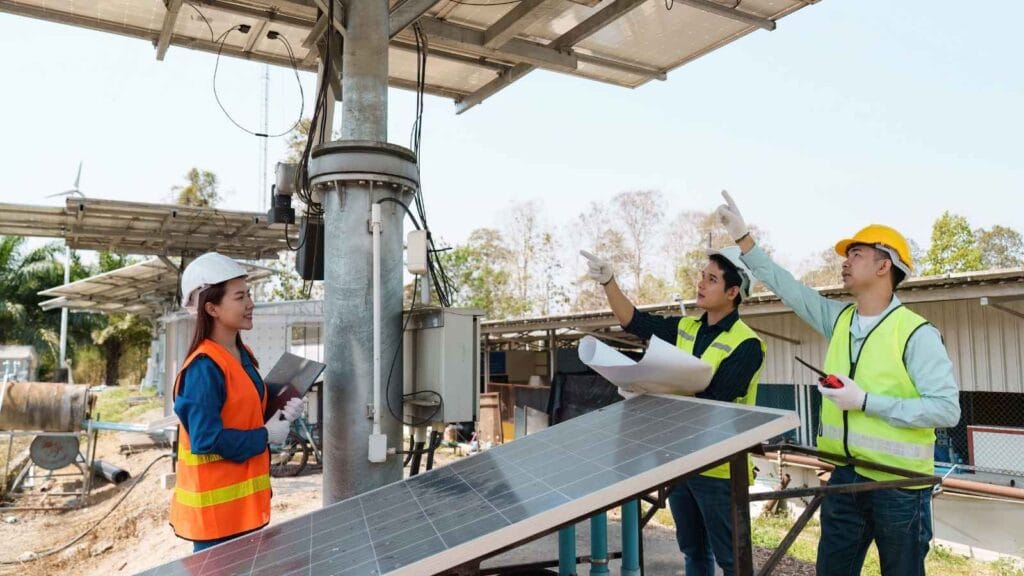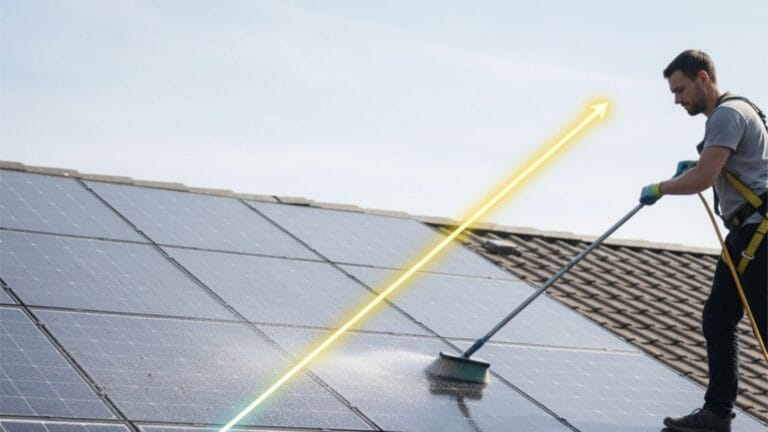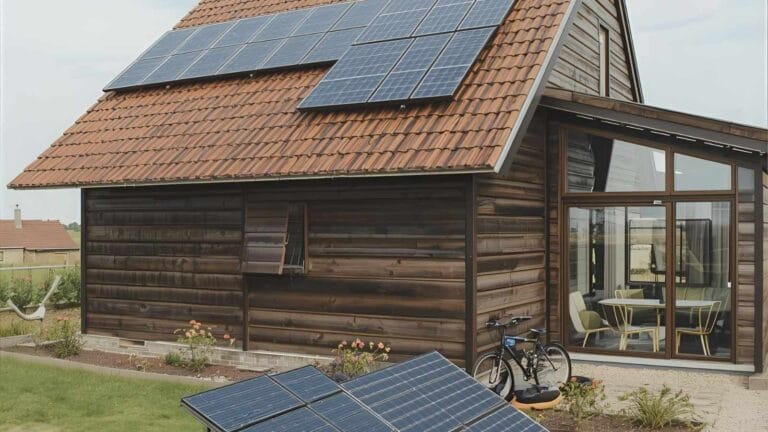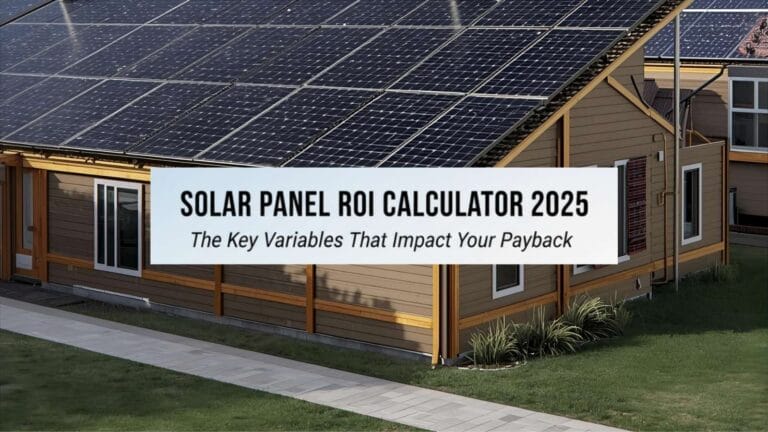How to Legally Install Solar Panels: The Permit and Approval Process in 2025
You’ve evaluated the benefits, calculated the potential savings, and are ready to join the clean energy revolution by installing solar panels on your home. It’s an exciting prospect, but in the rush to get panels on the roof, many homeowners overlook a critical, behind-the-scenes phase: the permitting and approval process. To legally install solar panels, you must navigate a series of administrative steps that ensure your system is safe, compliant with local codes, and properly connected to the power grid.
For many, the idea of dealing with permits, inspections, and utility paperwork can seem intimidating. It’s often the longest and least understood part of the entire solar installation timeline. However, this process is not a bureaucratic hurdle to be feared; it’s a vital consumer protection measure designed to guarantee the safety and structural integrity of your home and the stability of the electrical grid.
This comprehensive guide will demystify the solar permit and approval process in 2025. We will break down each stage, explain the purpose behind the paperwork, and clarify what you (and your solar installer) need to do to ensure your project proceeds smoothly and results in a fully legal, safe, and powerful solar energy system.
Why Do You Need a Permit to Install Solar Panels?
The primary reason you need a permit to install solar panels is safety and compliance. A solar installation is not a simple appliance; it’s a small power plant being integrated into your home’s structure and the public electrical grid. The permitting process serves several critical functions:
- Code Compliance: The permit ensures your project is reviewed by an official body to verify that the design meets rigorous local building and electrical standards, such as the National Electrical Code (NEC) in the U.S. This is the main safeguard against electrical fires and structural failures.
- Structural Integrity: Your roof needs to be able to safely support the weight and wind load of the solar array. The permitting process ensures that a proper structural review has been conducted by qualified engineers.
- Grid Stability: Your utility company must review and approve your system to ensure it can be safely interconnected without causing instability for you or your neighbors.
- Insurance and Resale Value: A legally permitted and inspected solar installation is essential for your homeowner’s insurance policy to cover it. It’s also a critical factor for your home’s resale value, as unpermitted work can create significant legal and financial issues for a future buyer.
What are the Main Stages of the Solar Permitting Journey?

While the specific requirements can vary significantly by country, state, and city, the overall journey to legally install solar panels generally follows a four-stage path. A reputable solar installer will manage this entire process for you, but understanding the steps will empower you as a homeowner and help you track your project’s progress.
Stage 1: Documentation and Plan Submission to the AHJ
The first stage involves creating and submitting a detailed application package to the relevant local authorities. This is the foundational paperwork that proves your proposed system is designed correctly.
What is an AHJ?
The application is submitted to your local Authority Having Jurisdiction (AHJ). This is typically your city or county’s building and safety department. The AHJ’s plan checkers review the entire package to ensure every detail complies with all applicable codes.
What documents are required for a solar permit application?
A complete application is a detailed technical dossier that typically includes:
- Site Plan: A drawing of your property showing the location of your house, the main electrical panel, and the proposed solar array.
- Structural Engineering Plans: Detailed blueprints showing the roof layout of the panels, the mounting and racking system, attachment points, and proof that the design complies with local wind and snow load requirements.
- Electrical Schematics (Three-Line Diagram): A complex wiring diagram that illustrates how all the electrical components—panels, inverter, disconnects, and your home’s service panel—are connected. This is what the electrical inspector will scrutinize most closely.
- Equipment Specification Sheets: Datasheets for the exact models of solar panels and inverters being used, proving they are certified for use in your region.
Many jurisdictions are working to streamline this process. Organizations like the Interstate Renewable Energy Council (IREC) provide resources and best practices to help municipalities adopt faster, more efficient online permitting systems like SolarAPP+ in the United States.
Stage 2: The Utility Interconnection Application
At the same time you’re seeking a building permit from your city, your installer will submit an interconnection application to your local utility company. You cannot legally connect your system to the grid without their express permission.
Why is utility approval necessary for solar panels?
The utility needs to ensure that your private power plant won’t negatively affect the public grid. Their engineers will review the electrical diagrams and equipment to confirm:
- Safety Protocols: The inverter must have a function called “anti-islanding.” This is a critical safety feature that automatically shuts down your solar system if the grid goes down. This prevents your system from sending power back onto the lines while utility workers are trying to make repairs, which could be fatal for them.
- Net Metering Agreement: This application serves as your formal agreement for net metering (or your local equivalent). It sets the terms for how you will be credited for the excess solar energy you export to the grid. The Solar Energy Industries Association (SEIA) offers detailed explanations of various net metering policies.
- Grid Capacity: In areas with high solar adoption, the utility may need to assess whether the local transformer and infrastructure can handle the additional power being generated.
This approval process can take anywhere from a few weeks to several months. No physical installation work can begin until you have both the permit from your AHJ and the initial approval from your utility.
Stage 3: Installation and On-Site Inspections
With permits and approvals in hand, your installer can schedule the physical installation. Once the work is complete, the system cannot be turned on. It must first be inspected and signed off by the AHJ.
What does a solar inspector look for during an inspection?
A city or county inspector will visit your home to conduct a thorough on-site inspection. The inspector’s job is to verify that what was built exactly matches the approved plans and meets all code requirements. They will meticulously check:
- Roof Mounting: That the racking is securely fastened to the roof structure and that all attachment points are properly sealed and weatherproofed.
- Electrical Wiring: That the correct type and gauge of wire was used, that it is run in a proper conduit, and that all connections are secure.
- Grounding: That the entire system—panels, racking, and inverter—is properly grounded to prevent electrical shock.
- Signage and Placards: That all required safety labels and placards are in place, clearly identifying the system for emergency responders.
- Component Verification: That the installed panels and inverter are the exact models listed on the permit.
If the inspector finds any issues, they will issue a correction notice, and the installer must fix the problem before scheduling a re-inspection. Once the installation passes inspection, the permit is “finaled” or closed out.
Stage 4: Final Utility Approval and “Permission to Operate” (PTO)
The final step in the legal process is getting the ultimate green light from your utility company. Just because your city approved the installation doesn’t mean you can start exporting power to the grid.
What is Permission to Operate (PTO)?
Permission to Operate (PTO) is the formal authorization from your utility company that allows you to turn on your solar panel system and connect it to the grid. After the city inspection is passed, your installer submits the “finaled” permit card to the utility. In many cases, the utility will then install a new bi-directional meter capable of measuring both the electricity you pull from the grid and the excess solar electricity you send to it.
Once the meter is set and the utility gives its final sign-off, they will issue the official PTO notification. Only after you receive this can you legally activate your system and start generating your own clean power.
How Long Does the Solar Permit and Approval Process Take?
One of the most common questions from homeowners is about the timeline. While the physical installation is quick (typically 1-3 days), the administrative process is not. It’s crucial to set realistic expectations. The timeline can vary dramatically based on your location.
| Process Stage | Typical Timeline | Key Factors |
| Stage 1: AHJ Permit Submission & Approval | 2 – 8 weeks | Efficiency of the local building department, use of online portals (e.g., SolarAPP+), complexity of the project. |
| Stage 2: Utility Interconnection Approval | 2 – 10 weeks | Utility company’s backlog, local grid capacity, complexity of the interconnection review. |
| Stage 3: On-Site Inspection | 1 – 3 weeks | Inspector availability and scheduling backlog in your municipality. |
| Stage 4: Final PTO from Utility | 1 – 4 weeks | Utility’s process for final review and meter installation schedule. |
| Total Estimated Timeline | 6 weeks to 6 months | This is the realistic range from signing a contract to system activation. |
What are the common mistakes to avoid?
To ensure a smooth process, avoid these common pitfalls:
- Starting Work Without a Permit: This is the biggest mistake. It is illegal and can result in heavy fines, orders to tear out the unpermitted work, and an inability to legally connect to the grid.
- Working with an Unlicensed Installer: A licensed solar contractor will know the local codes and have established relationships with the AHJ and utility, which can significantly speed up the process. Never work with an installer who suggests skipping the permit process.
- Incomplete or Inaccurate Paperwork: Errors in the application package are a primary cause of delays. A professional installer will ensure all plans and forms are filled out correctly the first time.
The Safe, Legal Path to Solar Energy
Navigating the solar permit and approval process is an integral part of going solar the right way. While your solar installer will handle the heavy lifting, understanding these four critical stages—plan submission, utility application, inspection, and PTO—makes you an informed and empowered homeowner. This carefully structured process ensures that your investment is not only powerful and efficient but also fundamentally safe for your family, your home, and the utility workers who maintain our electrical grid. By embracing this process, you guarantee that your journey to energy independence is built on a secure and legal foundation.

Solar Energy Enthusiast & Renewable Energy Researcher
Vural’s journey into solar energy began four years ago, driven by frequent power outages and high electricity bills at his own home. He has since gained hands-on experience with both personal and commercial solar projects. At solarpanelresource.com, Vural shares his real-world insights and in-depth research to guide homeowners and business owners on their own path to energy independence.







